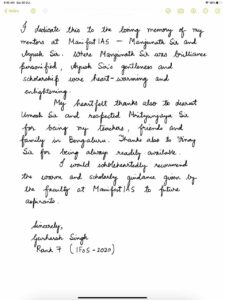About iVOFm-
- It can swiftly clean polluted water by soaking up sinister contaminants.
- In general, commonly utilised sorbent materials often trap these pollutants through ion-exchange strategy to purify water but suffer from poor kinetics and specificity.
- To mitigate this issue, our group prepared a newly engineered material called viologen-unit grafted organic-framework (iVOFm).
- The material employs amalgamation of electrostatics driven ion-exchange combined with nanometer-sized macropores and specific binding sites for the targeted pollutants.
- The size and number of tunable macropores along with the strong electrostatic interaction of iVOFm can quickly remove various toxic pollutants from water.
- To develop this unique material, this team employed a make-and-break strategy to grow a charged porous organic polymer (POP) as a sponge-like infinite framework on silica nanoparticles that is used as a template.
- Following this, the silica nanoparticles were strategically removed to create ordered hierarchical interconnected macro/microporosity throughout the material.
- This material features inherent cationic nature and macroporosity to allow fast diffusion of pollutants.
- When tested for a wide array of water pollutants, it showed ultrafast capture of all the pollutants — both organic and inorganic — with over 93% removal in just 30 seconds.
- Among all the tested pollutants, the new material showed ultrafast removal of sulfadimethoxine antibiotic from water almost completely.
- Even in the presence of other co-existing anions such as nitrates, chloride, and bromide, the removal of sulfadimethoxine antibiotic was extremely high within a minute.
- The engineered material could remove sulfadimethoxine antibiotic with high efficiency when tested using different real water samples.
- The fast pollutant trapping capacity is attributed to faster diffusion of pollutants through the ordered interconnected presence of macropores in the material.
- They also found this material to be very selective toward toxic pollutants in presence of co-existing ions present in waste water even at low concentration.
- It can also be used several times to clean contaminated water just like a bath sponge can be utilised to tackle multiple water spills.
- This cationic compound is adaptable for sequestering various pollutants and is a possible solution to the water pollution problem.
Water pollutants-
Systematic studies have identified various organic (organic dyes, antibiotics, pesticides, etc.) as well as inorganic toxic pollutants such as iodides, oxo-pollutants like perrhenate that are carcinogenic in fresh water sources and can pose direct threat to humanity and living organisms.
















